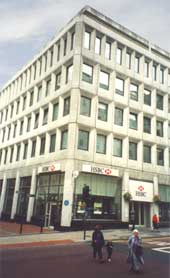| home
||| superimposed city tours ||| research: leeds |||
|
Psychogeographical mapping of coincidence in Leeds and Dortmund. Drifting through superimposed narratives of two cities at once.
|

|
||| leeds city museum |||
Just before midnight the Luftwaffe arrived and scattered explosives and
incendiaries across the city. There was considerable panic as 4,600 houses,
the museum and Town
Hall were damaged. Casualty figures were often obscured in
wartime to deny the Germans propaganda material but post-war records suggest
65 people were killed that night and 260 injured, 56 of them seriously.
http://www.applied-technologies.co.uk/ljcc2002/cityofleeds.htm
The worst raid was on 14 March 1941, when shortly before midnight high
explosives and incendiaries were showered over the city. The telephone
system was put out of action immediately, the waterworks and gas supplies
were affected... some damage to the City Museum
and the Town
Hall, 4600 houses damaged (100 of them beyond repair) and 65
or 64 dead, 56 or 57 seriously [injured] and 202 or 203 slightly wounded.
Owen A. Hartley, 'The Second World War and after' in Derek Fraser (ed), A History of Modern Leeds, P443
A bomb damaged the Town
Hall (shortly before its clock struck midnight on 14 March
1941) and the City Museum. Those who passed
the smouldering museum after the raid recalled a scattering of mounted
butterflies from the collections. A dug-out boat that to life when Giggleswick
Tarn was drained was blown into aqbout 45 pieces (later to be painstakingly
reassembled for exhibition in a special case with art-work to evoke the
original setting).
W.R. Mitchell, A History of Leeds, P143
|
||| offsite: articles |||
|

||| Site of City Museum, 09/02 |||
|
|
